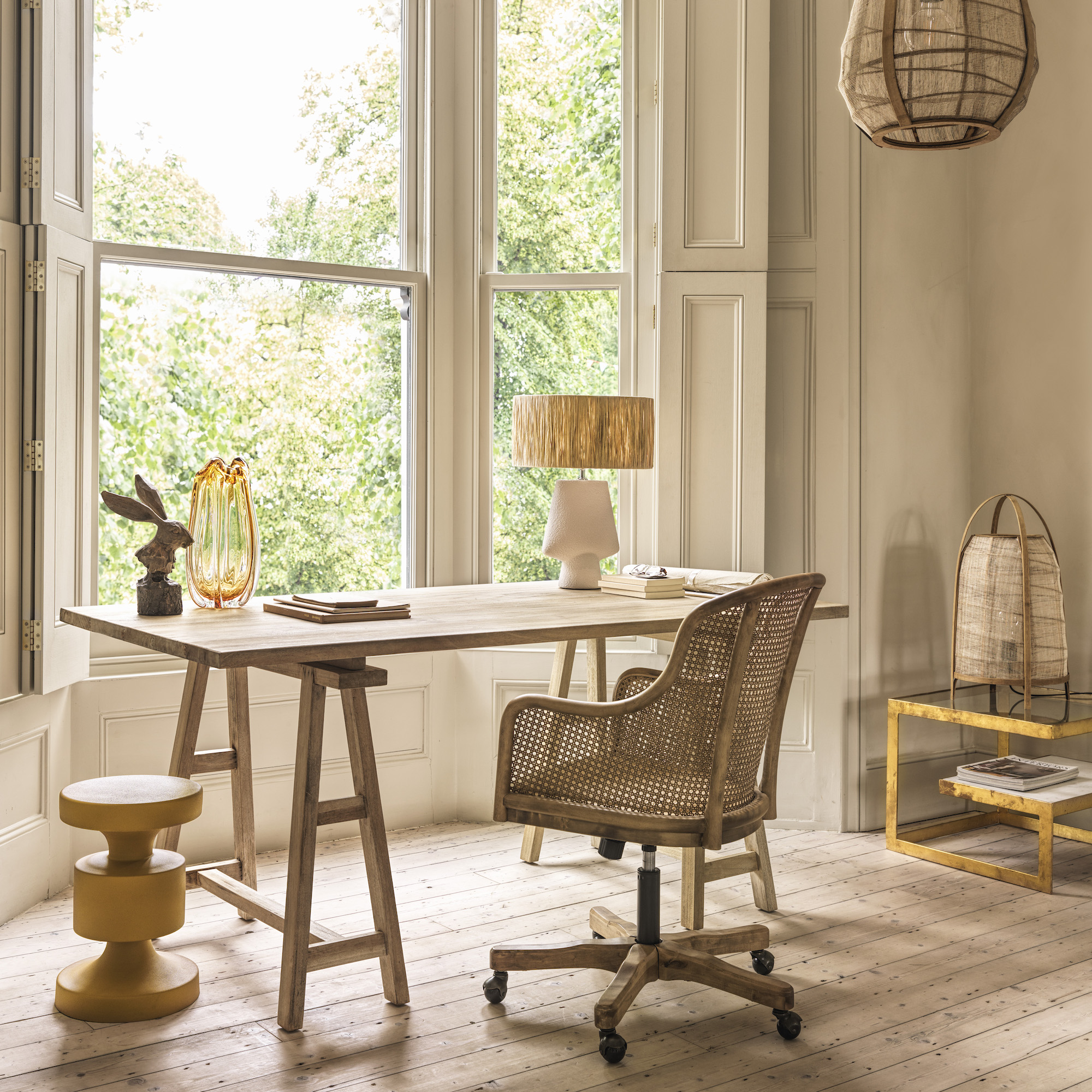
Flexible working means we're as likely to be taking Zoom calls and filling in spreadsheets from a home office, as we are going to meetings and chatting to colleagues over the coffee machine at an employer's. But how do we keep family life – and all its sounds and disturbances – from interrupting us?
While Covid saw many of us pivot to working from home more often, our desk set-ups often haven't caught up with our change in circumstances. We talked to interior designers, noise experts and researchers to find out how to soundproof a home office so you can work in peace. And just as importantly, how to stop noisy Zoom calls leaking beyond our office and disturbing the rest of the family.
When we can stay focused and productive, we can get the job done and get back to family life quicker. Ready, steady, Zoom…
Why we need quiet to work well at home
There are lots of ways noise can disturb us when we're working from home whether you have a dedicated home office or are making the most of a clever small home office idea squeezed into a cupboard. A quick poll of the idealhome.co.uk team (a mix of hybrid and remote workers) found that noisy neigbhours, family life, traffic noises, building works and the sound of the TV or radio can all interrupt us.
Researchers Dr Francesco Aletta and Dr Simone Torresin looked at the impact of historical (Covid lockdown), situational (family members and housemates) and spatial (urban areas and building structure) on productivity, concentration and mood when working from home.
'Quietness availability and the lack of intrusive noise are key for a sound environment that allows concentration and is conducive to work,' they report.
The people in their study used various coping strategies to block out unwanted noise, including closing doors and windows, turning up the TV, or using noise-cancelling headphones.
If you've already needed to soundproof a bedroom, you'll already know that sometimes these coping options don't quiet work. Fortunately, your home office decor could be your best friend in helping to create a quiet work environment. We spoke to Interior designers and experts who shared their top design solutions to soundproof our home offices and make them better places to work. They'll even look better, too. Now that's the kind of work bonus we can get behind…
1. Soundproof windows
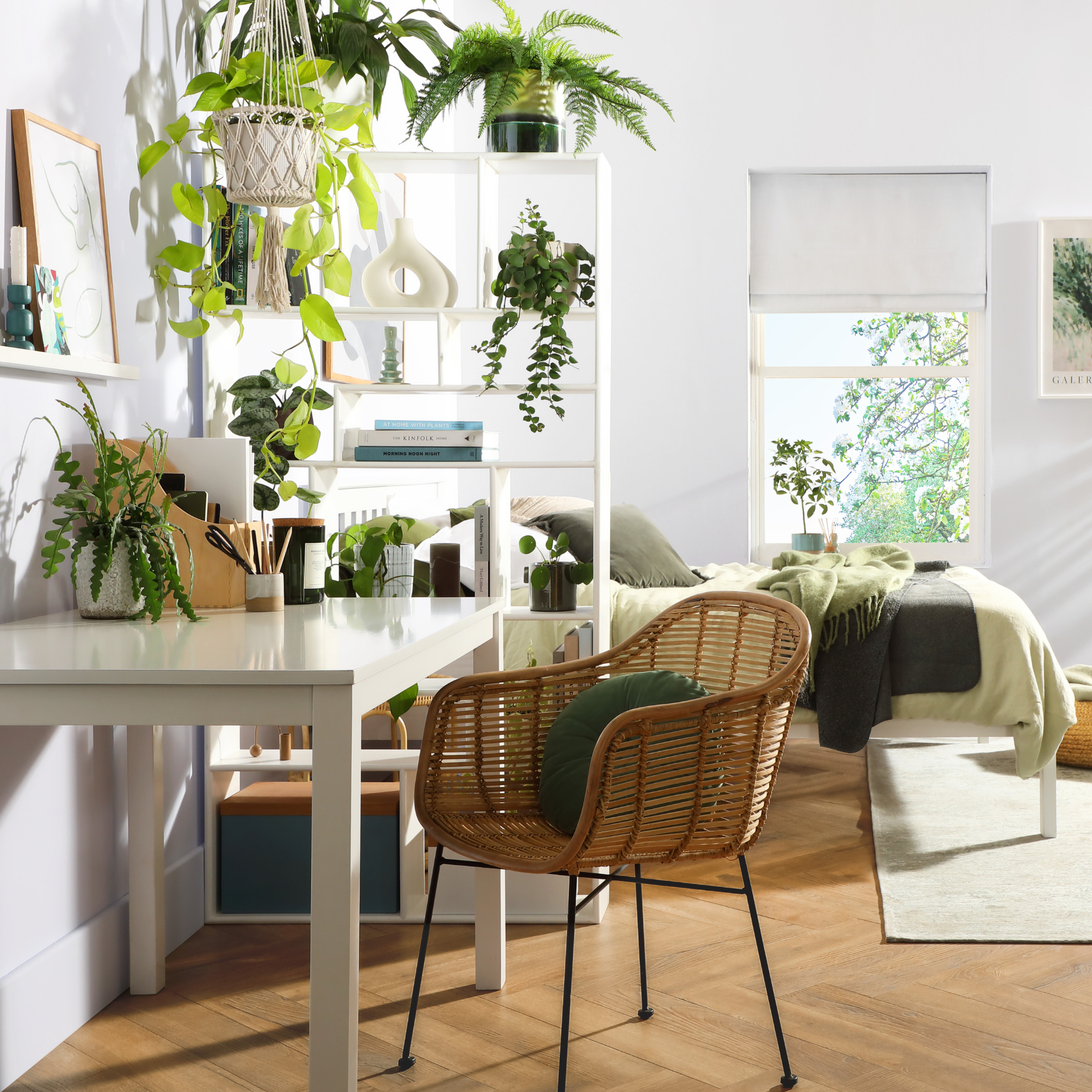
You've got up and closed the windows and shut the door, but noise from outside is still interrupting your chain of thought. Sound familiar? It may be time to upgrade your window glazing.
'Glazing and doors are key elements when trying to control unwanted noise from both inside and outside your home. Invest in window and door systems with outstanding acoustic performance for best results,' says Poppy Szkiler, CEO and founder of Quiet Mark, which tests and assesses products that reduce unwanted noise in the home.
'If your study has a window onto a noisy street then secondary glazing should definitely be considered,' suggests Lucinda Griffith, founder of Lucinda Griffith Design. 'While interlined curtains will help, they won’t make a difference in daytime working hours when they are open and the glass is leaking noise into the room.'
2. Insulate walls to block sound
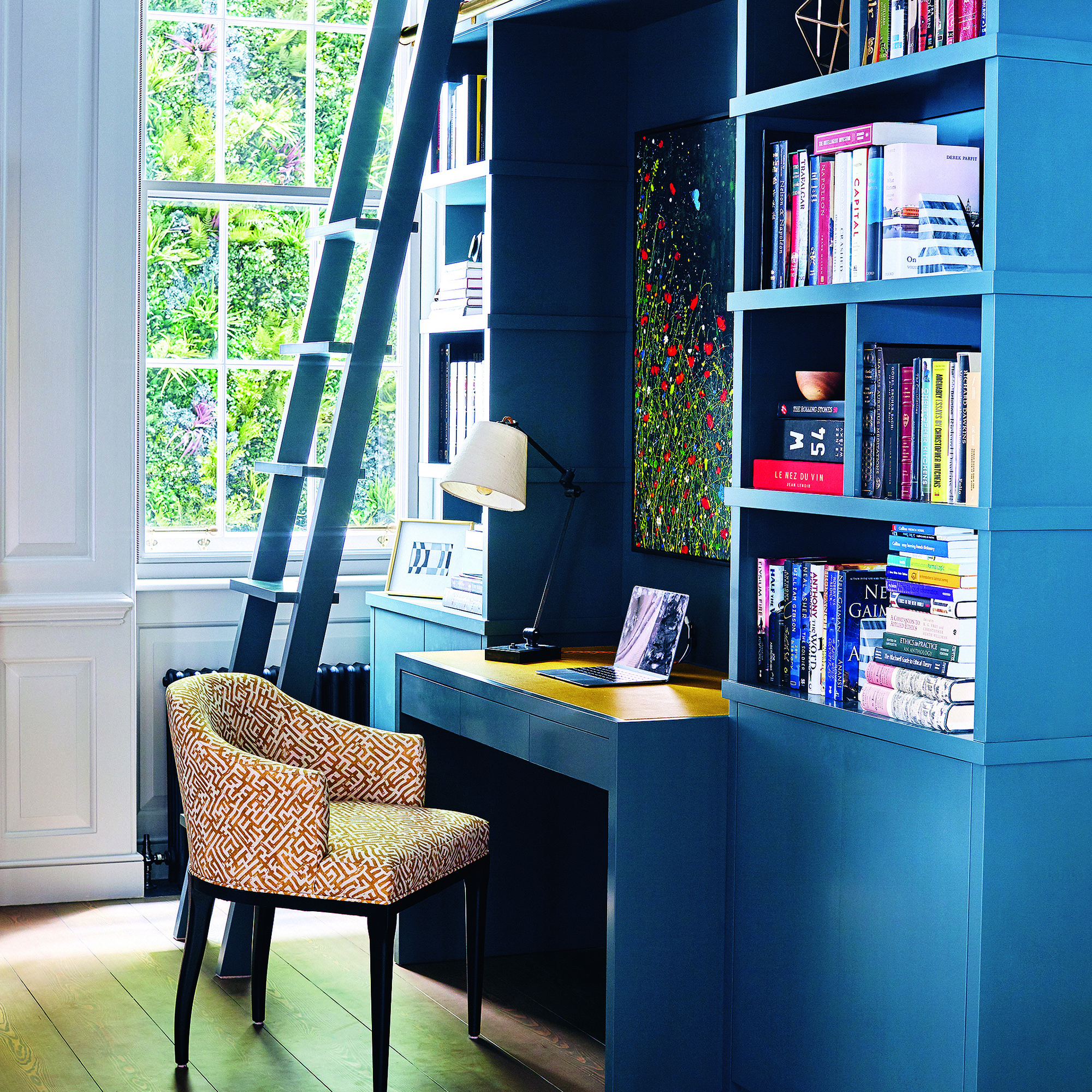
Not only does a bookcase make a great Zoom backdrop, but it can also help soundproof your home office, too. Any home office storage idea stretched over a wall will help do the trick.
'Bookcases filled with books will work as a sound barrier,' confirms interior designer Lucinda Griffith. 'A luxury option would be fabric walling, with a padded backing behind the fabric.
'If you are renovating your space, then do consider an acoustic plasterboard for your walls. This will make a huge difference in soundproofing your room from the rest of the house,' Lucinda continues.
This can be particularly useful if your home office is next to a busy area of your home, like the kitchen, or a high-traffic area such as the hallway
'To ensure minimal disruption if your home office is located next to a high-activity area such as a living room, you might need to consider adding extra layers of plasterboard, acoustic studs and mineral wool insulation on internal and separating walls and floors,' says Poppy Szkiler from Quiet Mark.
3. Soften the sound from hard floors
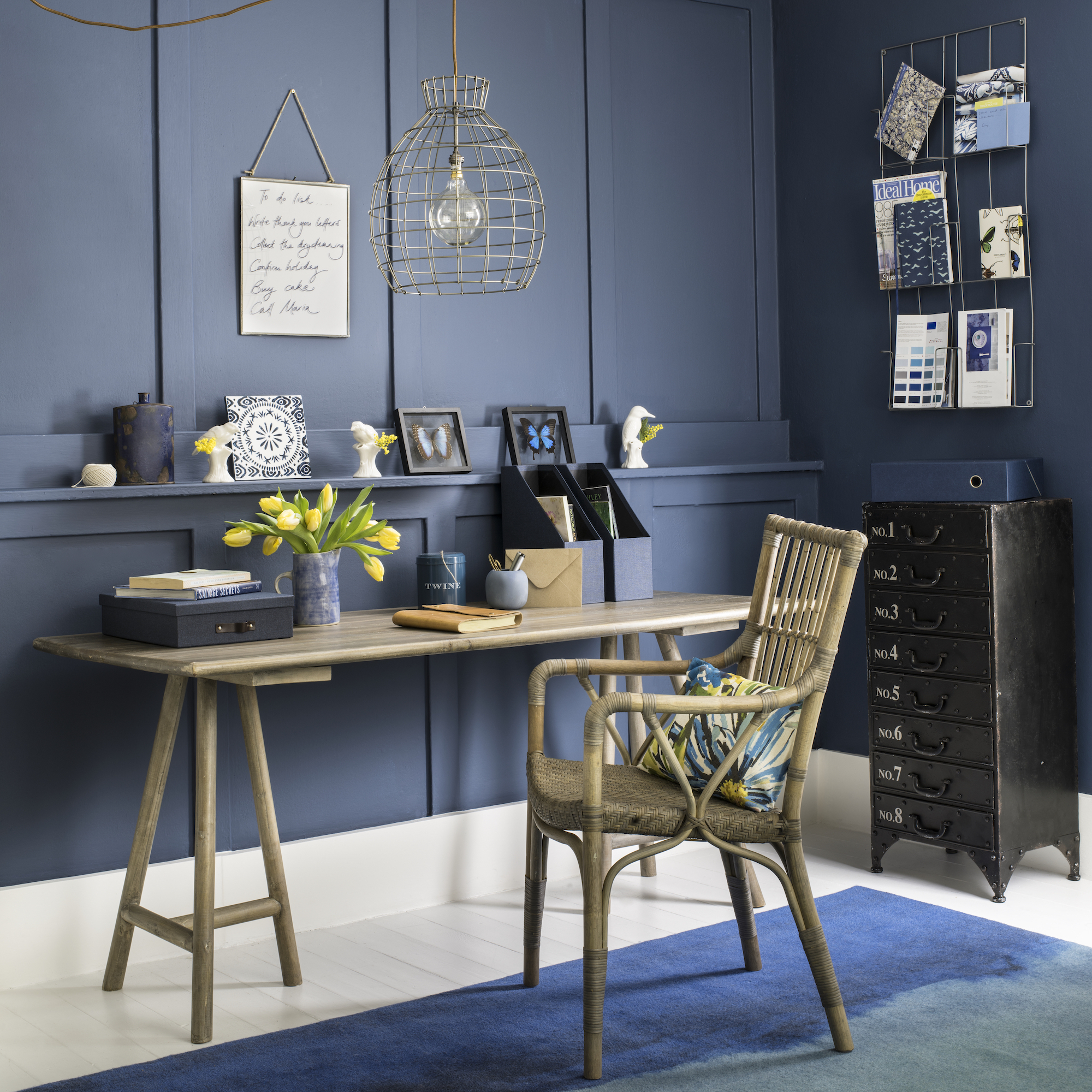
Ever wondered why your voice sounds croaky after a long day of Zoom calls at home? 'Hard surfaces such as tiled flooring, large expanses of painted plasterboard and windows can cause reverberation, which is when sound is amplified as it reflects back into the room. This can reduce our ability to hold conversations and increases vocal strain,' explains Poppy Szkiler.
'Sound-absorbing finishes can help create a more calming home environment. This can come in the form of rugs, fabric wall hangings and carpets, which can help reduce reverberation, especially when combined,' Poppy says.
'I'd avoid a hard floor surface in a home office but go for a carpet on underlay to help absorb sound instead,' says Lucinda Griffith.
4. Close the gap under doors
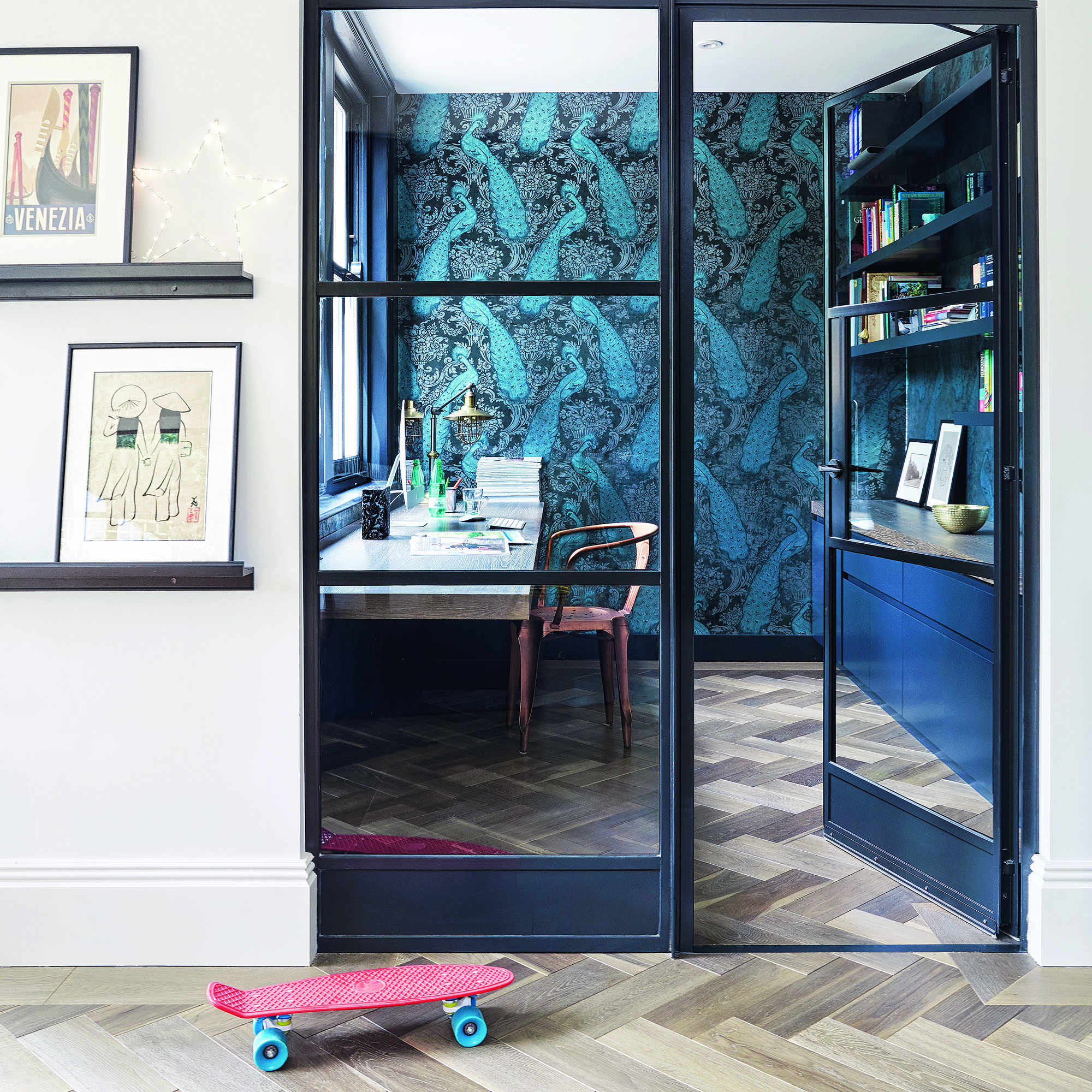
Sound leaking in and out of a home office from the gap around a door is a common problem. The easiest fix is to install a strip of stick-on foam insulator around the door frame, available at Amazon, in the same that you would tackle fixing a draughty door.
'Assuming your door is a solid one (a must if soundproofing) then look at the fit of the door in it’s frame,' advises Lucinda Griffith. 'Adding a draught sealant around the edges will not only help the heating bill, but also muffle any noise creeping in through those gaps.'
For extra glam, why not cover the inside of the door with insulating wadding, covered in fabric, held in place with studs? This will give your office a private members' club vibe, while reducing sound infiltrating into the space.
5. Invest in quiet electrical equipment
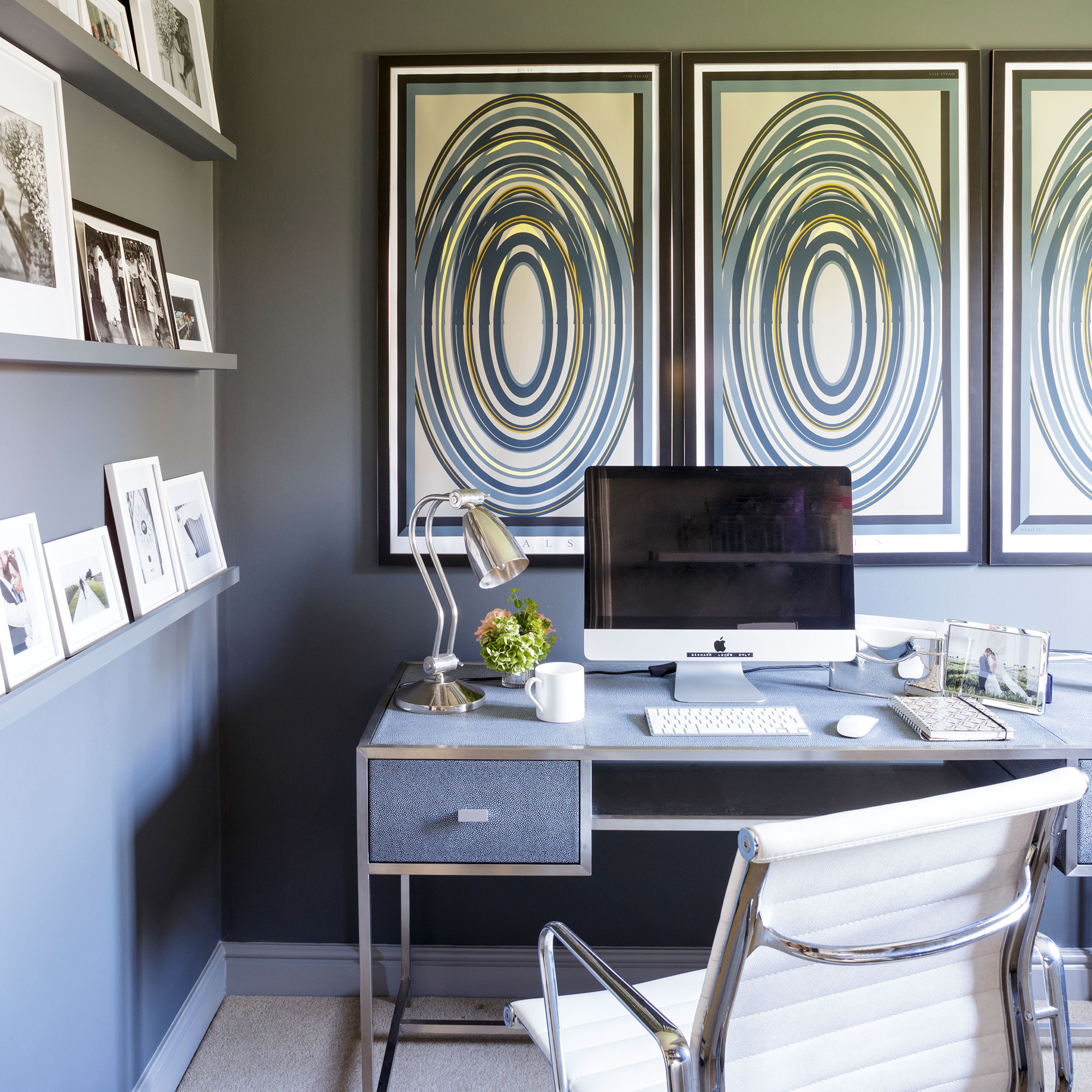
The noise of fans, computers, heaters, printers and any other electricals will create the 'soundscape' of your home office. The louder the background noise, the more the volume needs to be turned up in other areas, such as the volume of phone and video calls.
'Now that remote working has become the new normal for many of us, we need to ensure our working environment is efficient and effective – a place that lets us be our best work selves,' says Poppy Szkiler from Quiet Mark. The organisation has an online directory, which provides an overview of the quietest appliances currently available, including desk fans, acoustic office furniture, flooring, blinds and acoustic wall coverings.
'When Quiet Mark tests or verifies home appliances, we take into consideration a variety of factors including sound quality. The way a product sounds can either enhance or disrupt your space,' Poppy explains. 'Two appliances could have the same decibel level, but one could have an annoying rattling sound, in which case, we’d exclude it.'
Walls, floors, doors and windows sorted, soft rugs and curtains in place, and quiet gadgets plugged in. It's time to get to work.







